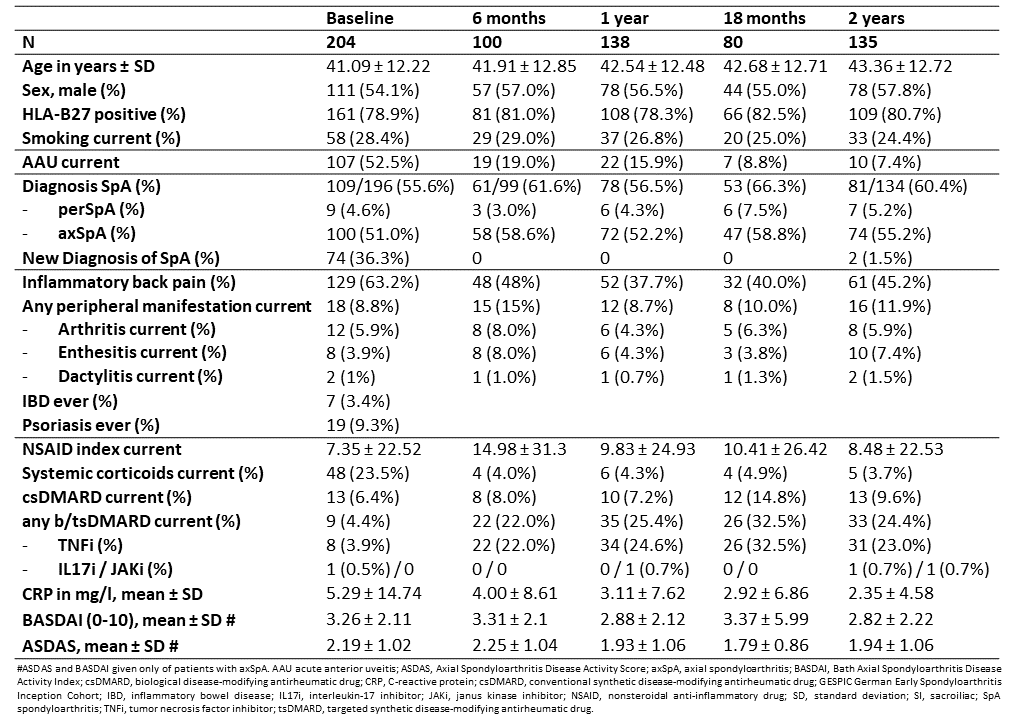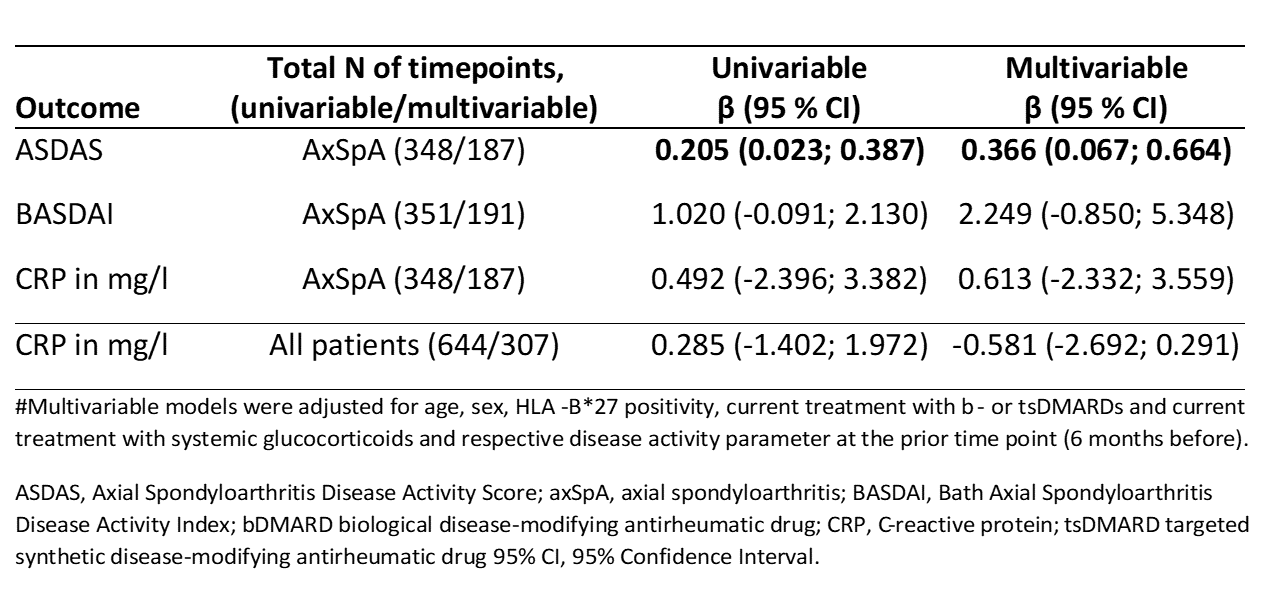Session Information
Date: Saturday, November 16, 2024
Title: SpA Including PsA – Diagnosis, Manifestations, & Outcomes Poster I
Session Type: Poster Session A
Session Time: 10:30AM-12:30PM
Background/Purpose: Acute anterior uveitis (AAU) and axial spondyloarthritis (axSpA) are closely linked, with AAU being the most common extra-musculoskeletal manifestation of axSpA. Up to half of the patients with AAU have concomitant SpA1. However, the relationship between the activity of AAU and SpA remains unclear. This study aimed to analyze the association between the activity of AAU and the disease activity of axial SpA (axSpA).
Reference: 1Rademacher J, et al. Arthritis Rheumatol. 2023;75(2):210-9.
Methods: The present analysis includes the 2-year data of patients of the Uveitis arm of the German Early Spondyloarthritis Inception Cohort (GESPIC-Uveitis)1, a prospective cohort of patients with non-infectious AAU diagnosed by ophthalmologists. Follow-up visits including clinical data and patient reported outcome measurements took place every 6 months with a maximum of 5 timepoints. At each visit, the presence of current AAU as well as the number for the AAU flares since the last visit were recorded. The axSpA disease activity was measured using the Axial Spondyloarthritis Disease Activity Score (ASDAS), the Bath Axial Spondyloarthritis Disease Activity Index (BASDAI), and C – reactive protein (CRP). Generalized Estimating Equations (GEE) were used to analyze the association between the presence of active AAU (current flare) and axSpA activity by using an autoregressive working correlation structure. All multivariable models were adjusted for clinically relevant parameters taking into account the causal relationships between exposures and outcomes based on published literature and expert knowledge.
Results: At study inclusion, 107 out of the included 204 patients (52.5%) had current AAU; the frequency of active AAU at the follow-up visits during the next 2 years decreased over time (Table 1). At baseline, 109 patients (55.6%) had a diagnosis of SpA (with the vast majority presenting axSpA). During the 2 years of follow-up, two patients were newly diagnosed with peripheral SpA. In longitudinal GEE analysis of axSpA patients, current AAU was associated with higher ASDAS in multivariable analysis (β=0.366 [0.067; 0.664], Table 2), while the association with BASDAI and CRP did not reach the level of statistical significance. There was also no significant association between the presence of AAU and CRP in the entire group.
Conclusion: The presence of current AAU is positively associated with disease activity of axSpA as reflected by ASDAS most likely indicating parallelism of the inflammatory processes. This further emphasizes the importance of close collaboration between rheumatologists and ophthalmologists for the management of patients with AAU and axSpA.
To cite this abstract in AMA style:
Rademacher J, Torgutalp M, zur Bonsen L, Pohlmann D, Haibel H, Proft F, Protopopov M, Pleyer U, Rios Rodriguez V, Poddubnyy D. Association of the Presence of Active Acute Anterior Uveitis with Disease Activity in Axial Spondyloarthritis [abstract]. Arthritis Rheumatol. 2024; 76 (suppl 9). https://acrabstracts.org/abstract/association-of-the-presence-of-active-acute-anterior-uveitis-with-disease-activity-in-axial-spondyloarthritis/. Accessed .« Back to ACR Convergence 2024
ACR Meeting Abstracts - https://acrabstracts.org/abstract/association-of-the-presence-of-active-acute-anterior-uveitis-with-disease-activity-in-axial-spondyloarthritis/


